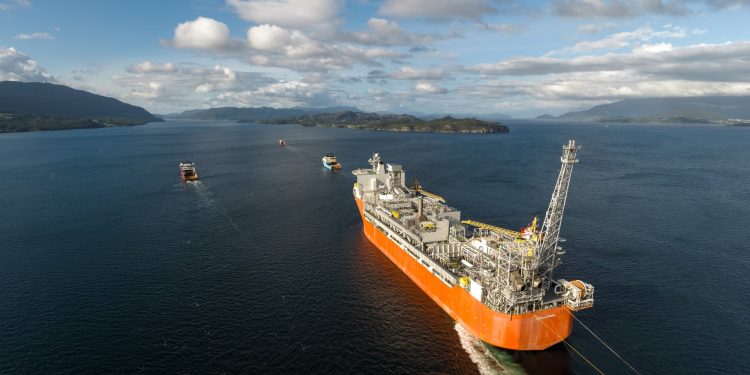New Oil Asset in the Arctic
Norway has officially brought one of its most important Arctic energy projects into production. On March 31, 2025, the Johan Castberg oil field in the Barents Sea began operations, marking a major milestone in the country’s strategy to develop Arctic resources and solidify its position as a key energy supplier to Europe.
The field is operated by Equinor (50%), in partnership with Vår Energi (30%) and Petoro (20%). Located approximately 100 km north of the Snøhvit field and 240 km from the Norwegian coastline, Johan Castberg is considered a cornerstone of oil infrastructure development in the Barents region.
The development includes three discoveries — Skrugard (2011), Havis (2012), and Drivis (2014) — all under license PL 532. Recoverable reserves are estimated between 450 and 650 million barrels of oil. Water depths in the project area reach 360–390 meters.
FPSO-Based Development and Economic Outlook
The project uses a Floating Production, Storage and Offloading (FPSO) vessel linked to an extensive subsea system. In total, 30 wells are planned, connected via 10 subsea templates and two satellite structures. By the end of 2024, 14 wells had been drilled, with 12 ready for production — enough to reach the target plateau of 220,000 barrels per day, expected to be sustained for 30 years.
Initially set to begin in Q4 2024, the start of production was delayed to Q1 2025 due to weather conditions and logistical setbacks. The total project cost reached NOK 86 billion (approx. $8.1 billion) amid rising expenses. Equinor expects the project to pay back in less than two years.
Johan Castberg is viewed as a strategic Arctic asset by Equinor, with plans to tie in nearby resources estimated at 250–550 million barrels. Further exploration and potential expansion of gas export infrastructure, including a new pipeline, are also under consideration.
Norway’s Oil and Gas Sector: Record Investment Amid Transition
In 2024, Norway produced 1.8–2 million barrels of oil per day, down from a peak of 3.4 million bpd in the early 2000s due to natural decline at mature fields. However, gas production reached a record 124 billion cubic meters in 2023, and gas exports hit a record 117.6 bcm in 2024, primarily via pipelines to the EU.
The country’s oil and gas investments reached an all-time high of NOK 256.1 billion (approx. $22.9 billion) in 2024, surpassing the previous record set in 2014. The growth is driven by higher field development costs, increased exploration activity (42 wells drilled, up from 34 in 2023), inflation, and a weaker Norwegian krone.
Net petroleum revenues totaled NOK 680 billion ($61 billion) in 2024, contributing to Norway’s sovereign wealth fund. Oil and gas account for 15% of the country’s GDP and 40–50% of exports, reinforcing their importance to the national economy. Production is expected to remain stable through 2029 before gradually declining.
A Dual Energy Role in the Global Transition
Norway’s oil era began in 1969 with the Ekofisk discovery. Since then, the country has evolved into a global energy powerhouse, with offshore operations mainly in the North Sea and Norwegian Sea — and now increasingly in the Barents Sea.
Despite its role as a major oil and gas exporter, Norway is also a global leader in clean energy and electrification. The country generates 95–99% of its electricity from hydropower, making its grid one of the greenest in the world. Excess electricity is exported to neighbors such as Sweden, Denmark, and the UK, boosting regional energy stability.
Norway is aggressively pursuing electrification across sectors. Over half of new cars sold are electric or hybrid vehicles, and from 2025, the country plans to ban the sale of new internal combustion engine vehicles, underscoring its ambition in the global energy transition.











